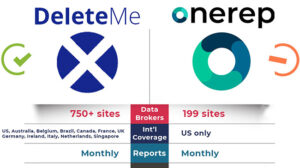Confused between DeleteMe and Optery for data removal needs? This comprehensive guide compares these data removal tools, meticulously analyzing their features, user experience, pricing, effectiveness, and more. I’ve personally used both DeleteMe and Optery, giving me the firsthand experience that I’m confident will help you to make the smart choice.

Key Takeaways
- DeleteMe has a clear advantage over Optery in terms of international coverage, with services available in multiple countries, while Optery’s personal plan only covers the US.
- DeleteMe’s methodology involves a dedicated privacy advisor assigned to each user, providing personalized support, while Optery’s approach varies based on the subscription plan.
- Both services prioritize data security and have undergone independent audits, but DeleteMe’s leans on a more manual approach while Optery is more automated.
- DeleteMe offers additional features for proactive data protection like email and phone masking, whereas Optery only removes data.
DeleteMe vs Optery: A Side-by-Side Comparison
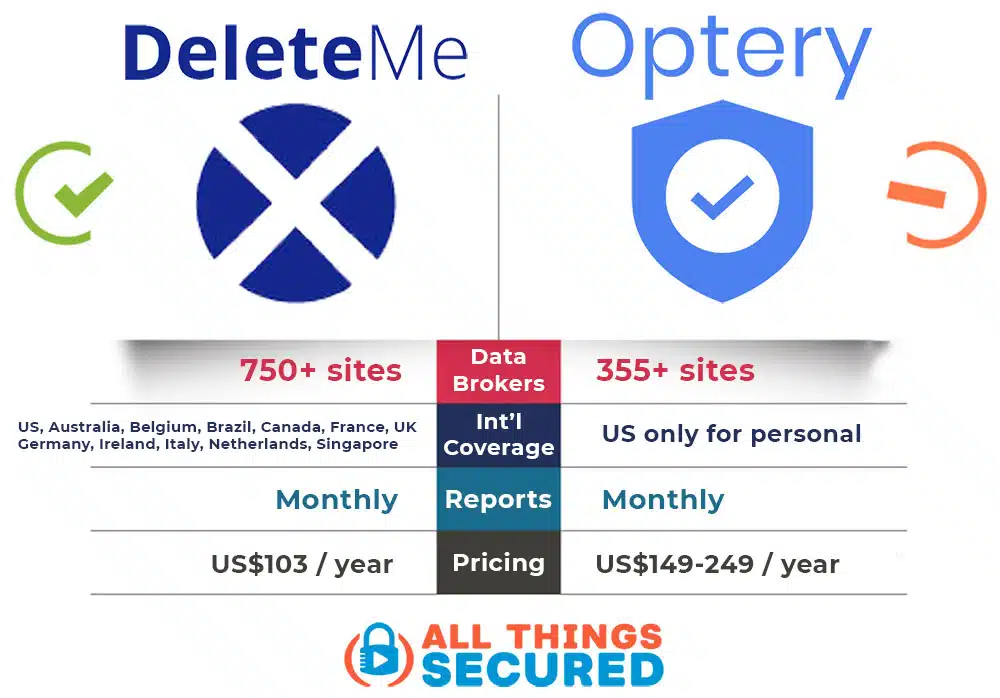
At first glance, you can see that DeleteMe boasts coverage of 750+ data brokers, while Optery’s highest-tier plan ($249/year) only covers 355. However, is this the most important factor to consider?
Absolutely not!
Evaluating a personal data removal service involves its methodologies, accessibility, security measures, and customer support assistance. Continue reading as I explore these facets and more to determine whether DeleteMe or Optery is better suited for your needs.
- Scope of Services: What Each Company Targets
- Methodology: How They Remove Your Data
- Analyzing User Experience: DeleteMe and Optery
- The Cost of Maintaining Anonymity: Pricing Plans Compared
- Security Measures: Protecting Your Sensitive Information
- Customer Care: Support Systems of DeleteMe and Optery
- Effectiveness and Efficiency: Real Results from Users
- Additional Features: Beyond Basic Data Removal
Note: Some of the links in this article may be affiliate links, which means that at no extra cost to you, I may be compensated if you choose to use one of the services listed. I only recommend what I personally have used, and I appreciate your support!
Scope of Services: What Each Company Targets
Both DeleteMe and Optery aim to remove your personal information that has been published online without your consent. These platforms serve as the quickest way for individuals and businesses to systematically identify and remove this sensitive data from a multitude of data brokers, people search sites, and other online directories.
The major distinction between these data removal tools lies in their international accessibility. DeleteMe holds a clear advantage by offering data removal services in numerous countries across all of its pricing plans (visit the DeleteMe international site for more).
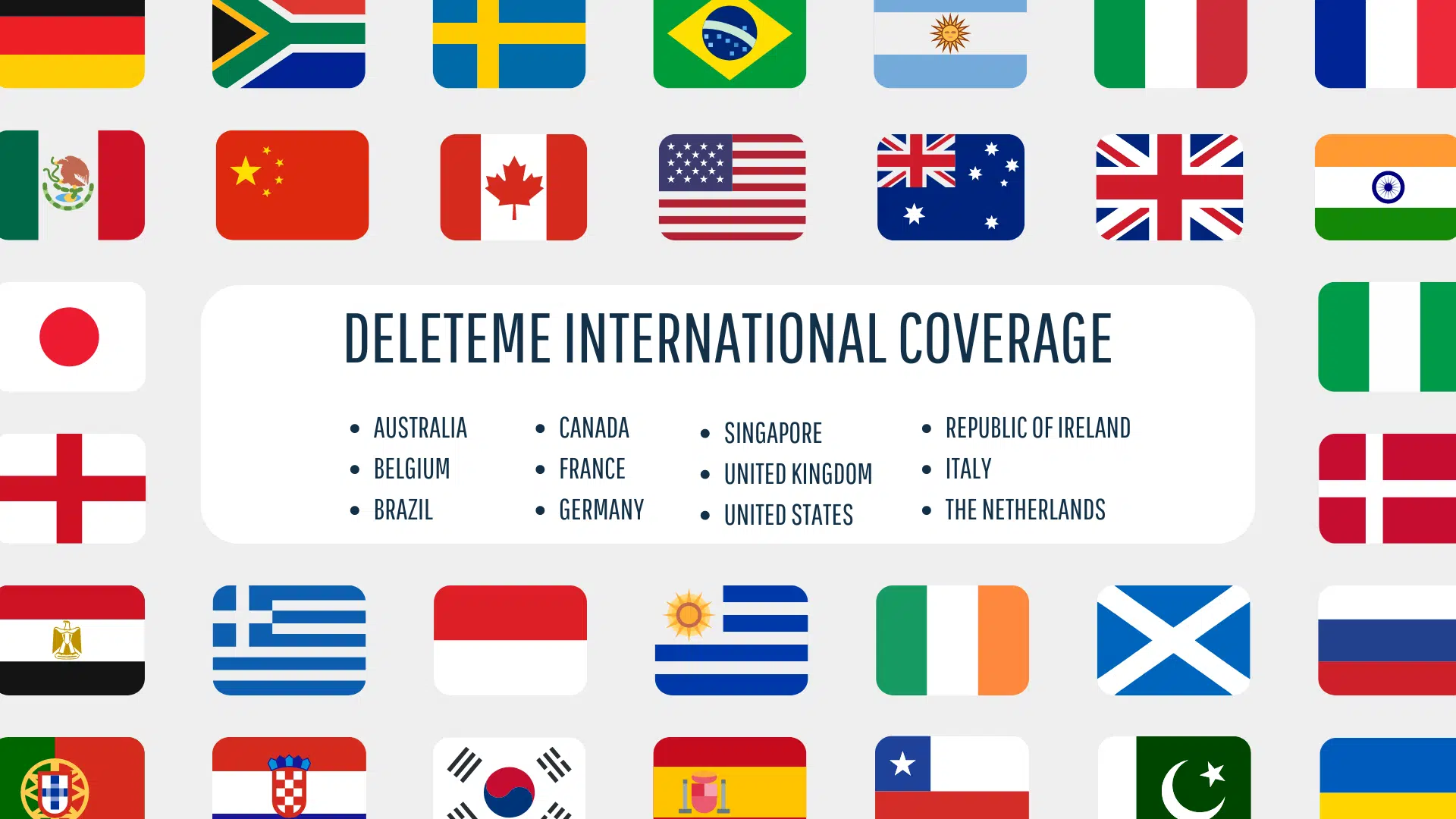
By contrast, Optery is both headquartered in the US and only serves US residents. There are exceptions for international business accounts that exceed certain subscription volume thresholds (e.g., 20+ subscriptions), but that doesn’t apply to the majority of users.
Methodology: How They Remove Your Data
There are a number of different ways that data can be removed online, ranging from manually intensive, to automated, to using AI.
DeleteMe has a mixed manual/automated process that assigns a dedicated privacy advisor to all users. Removal requests are often automated, but users can discuss their data removal progress or request other sites for removal with their assigned advisor.
In contrast, Optery uses different methods based on the plan chosen. Their most basic plan relies solely on a “bot only” automated approach, which lacks the quality assurance that comes from human intervention. Their other plans do offer a “Humans + Machines” approach, similar to DeleteMe. However, Optery does not display the name or icon for the assigned Privacy advisor but instead relies on shared live-chat support.
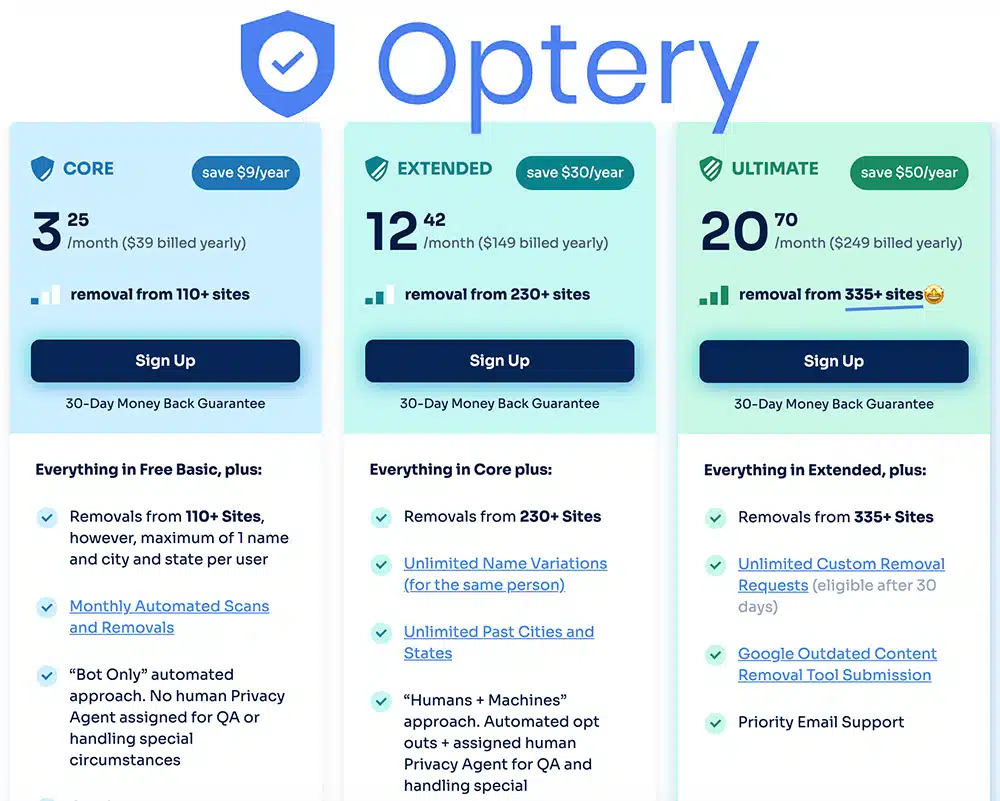
Something else worth mentioning is that DeleteMe lets users submit custom data removal requests to their advisor. This means users can eliminate data from 500+ additional sites beyond the standard coverage.
Though Optery also accepts custom removal requests, this service is limited to users who pay for their Ultimate plan.
Analyzing User Experience: DeleteMe and Optery
Both DeleteMe and Optery share similar user interfaces designed to be intuitive, and users can easily navigate their services and track the progress of their data removal efforts.
The DeleteMe dashboard, for instance, utilizes multiple bar graphs and pie charts to demonstrate the user’s exposed data, the type of information found (such as address, property records, name, phone, and family members), the listings reviewed, and the listings successfully removed.

Optery’s interface also features a couple of pie charts to showcase the user’s exposure level and the progress and status of their data protection.
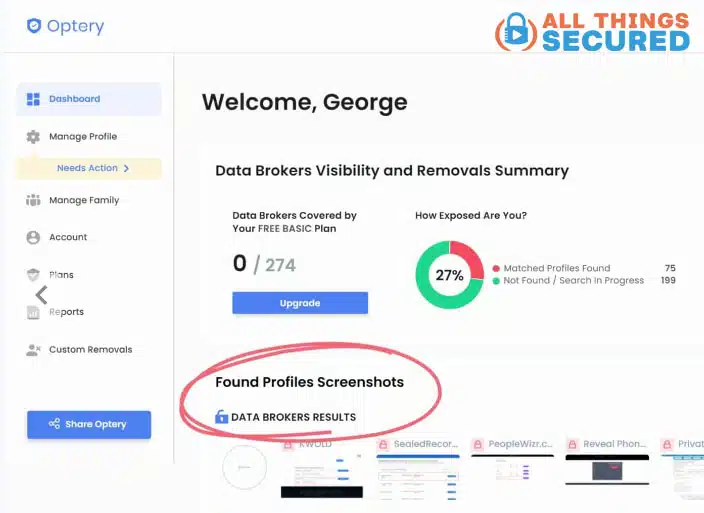
Navigation and Ease of Use
While the dashboards of both DeleteMe and Optery share similar design elements, the differences are most evident when accessing reports. DeleteMe provides a visual representation of data removal, designed for easy comprehension.
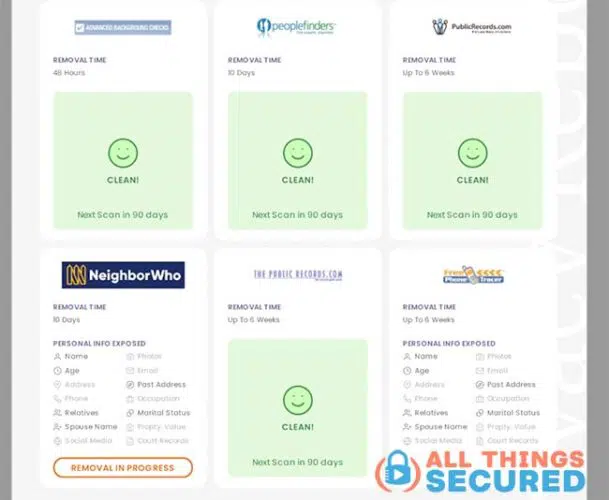
In comparison, Optery offers a list view of websites with identified personal information, accompanied by links to profiles (this is also emailed to users as well).
Optery goes a step further to include screenshots that display actual profile data from each site, a feature not included with DeleteMe.
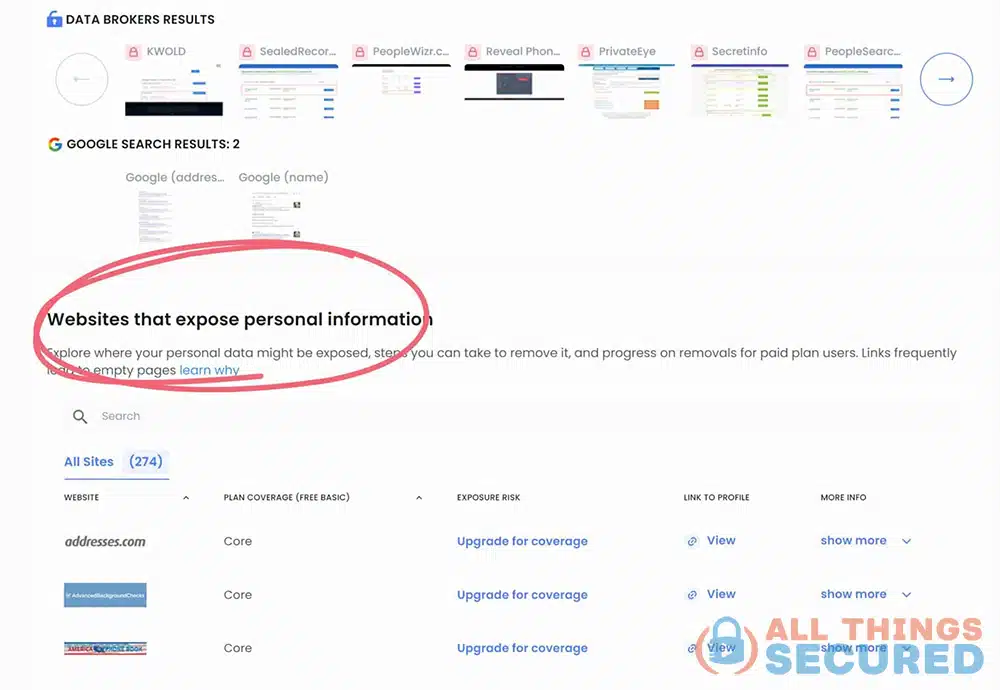
Although both methods accomplish the same task, Optery holds a slight advantage here with both a website and privacy report that show screenshots proving the work that is being done.
Communicating What’s Happening to Your Data
Both DeleteMe and Optery excel at providing users with clear and comprehensive information about their data removal practices. On their respective websites, you can find detailed breakdowns of the data broker websites and online sources they cover.
Furthermore, both companies offer thorough self-help guides and FAQs to educate users on the data removal process and empower them to take an active role in securing their online privacy.
Regarding the frequency of removal reports, DeleteMe offers updates every quarter, while Optery claims to deliver a more frequent monthly reporting schedule to its paid users.
The Cost of Maintaining Anonymity: Pricing Plans Compared
Let’s talk about the pricing structures of these services. DeleteMe follows a more standardized approach, offering an individual plan at $129 per year, a plan for two at $229 per year, and a family plan at $329 per year.
All these DeleteMe plans cover the removal of data from the company’s claimed 750+ data brokers.
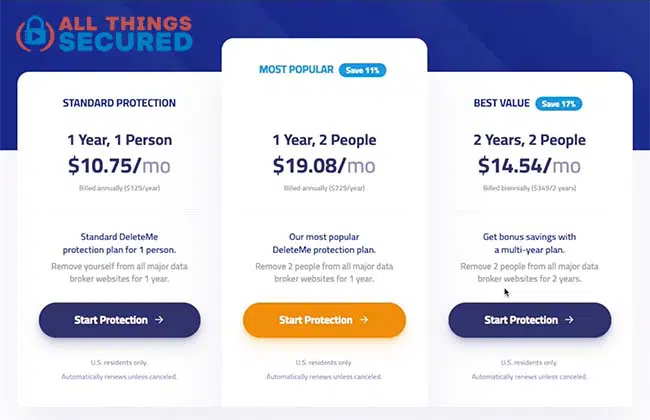
Optery’s pricing model is more nuanced, with a range of options to choose from:
- Core Plan: “Bot only” automated approach, removals from 110+ sites, with a maximum of 1 name and city/state per user, priced at $39 per year.
- Extended Plan: “Humans + machines” approach, removals from 230+ sites, priced at $149 per year.
- Ultimate Plan: Removals from 335+ sites, unlimited custom removal requests (eligible after 30 days), priced at $249 per year.

The key distinction here is that Optery’s lower-priced plans cover a more limited number of data broker sites, while the higher-tier plans unlock a broader range of online sources. They do have a “Free” plan, which we’ll cover below.
Furthermore, Optery offers a 30-day money-back guarantee on its plans, while DeleteMe offers a refund only before the first privacy report is completed (pro-rated thereafter).
Monthly vs Annual Options
When it comes to billing frequency, Optery stands out by offering monthly subscription options, whereas DeleteMe operates only on an annual basis.
This flexibility with Optery could potentially allow users to remove their data and then cancel their subscription once the desired outcome is achieved.
Optery Free Plan
Additionally, Optery provides a free basic plan, which, although limited in scope, allows users to receive personalized exposure reports with screenshots every 90 days without the need for a credit card. It’s worth noting that in the free plan, Optery doesn’t handle data deletion, so users must opt out manually.
DeleteMe also offers a free scan but doesn’t feature it as prominently as Optery. You can access it by running a web search for “DeleteMe free scan.”
Considering the overall pricing landscape, DeleteMe wins the pricing round as its standardized annual plans, which cover a more comprehensive set of data brokers, may be the more straightforward and cost-effective choice for many users.
However, Optery’s flexible monthly options and free plan could be appealing to those seeking more control over their subscription.
Security Measures: Protecting Your Sensitive Information
As with any data removal service, both DeleteMe and Optery need you to provide them your personal information in order to find and remove it. As alarming as this may sound, it’s not a big deal given that most of this information is already available for free online. Still it’s important to know how they handle your data.
Given this, it’s crucial for these identity protection services to have robust security measures in place to protect their users’ data against potential loss, misuse, or unauthorized access.
Data Handling Policies
Both DeleteMe and Optery assert no affiliation with data brokers, a claim not upheld by certain competitors like OneRep.
DeleteMe’s website features a comprehensive privacy policy spanning multiple pages, outlining in detail the types of data they collect and how it’s managed. It mentions that DeleteMe utilizes 256-bit AES encryption and TLS 1.2 encryption to safeguard your personally identifiable information.
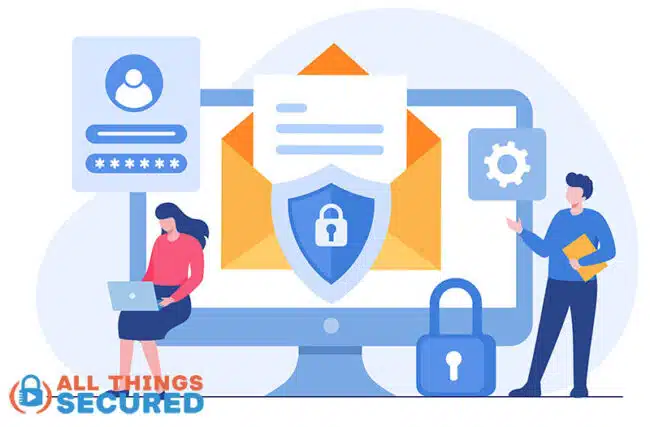
Similarly, Optery’s privacy policy provides comprehensive transparency around its data handling practices. Notably, both companies have been independently audited and have completed their AICPA SOC2, Type II security certification, demonstrating their commitment to rigorous data security standards.
Moreover, both DeleteMe and Optery implement strict access controls, multi-factor authentication (MFA), and role-based access to minimize data exposure.
In other words, while you can never entirely eliminate the risk of data exposure, both companies have built comprehensive data protection controls that you can reasonably trust.
Reliability of Automatic Opt-Out Processes
Some personal data removal services rely entirely on manual human processes for removals, while others solely utilize bot automation. DeleteMe mostly employs human operators for the search and opt out requests.
In contrast, as previously mentioned, Optery uses bots or a combination of bots + humans based on the chosen plan for automatic opt-outs.
Both services have proved effective in automatic opt-outs, but DeleteMe’s predominantly manual approach performed by human specialists may provide an added layer of reliability and attention to detail, particularly for more complex removal cases.
Customer Care: Support Systems of DeleteMe and Optery
When navigating the lengthy process of data removal, the availability of responsive customer support can make all the difference. Both DeleteMe and Optery have established robust customer care systems to assist users throughout their privacy protection journey.
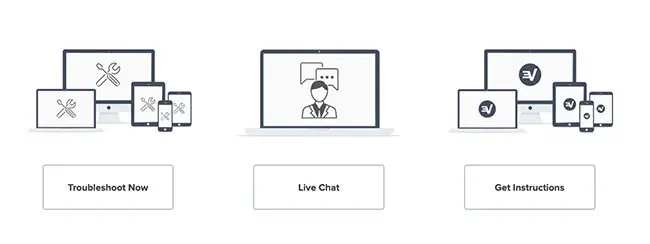
Responsiveness to Customer Inquiries
DeleteMe offers users multiple channels to reach out for support, including a live chat feature, a dedicated support section, and the ability to directly talk with their assigned Privacy Advisor. Based on my experience, the DeleteMe support team has consistently provided timely and helpful responses to all inquiries.
Similarly, Optery features live chat and email support options for its customers. While the response times can vary depending on the volume of support requests, Optery’s team generally responds to queries within 1-2 business days.
Assistance with Complex Cases
For intricate issues, both DeleteMe and Optery prove to be valuable.
DeleteMe provides specialized assistance through its Custom Removal request feature (via your dedicated advisor), whereas Optery offers the same type of custom removal service as part of its premium “Ultimate” subscription plan.

Effectiveness and Efficiency: Real Results from Users
Both DeleteMe and Optery have proven their expertise in removing personal information from data brokers, based on user feedback and my own experience.
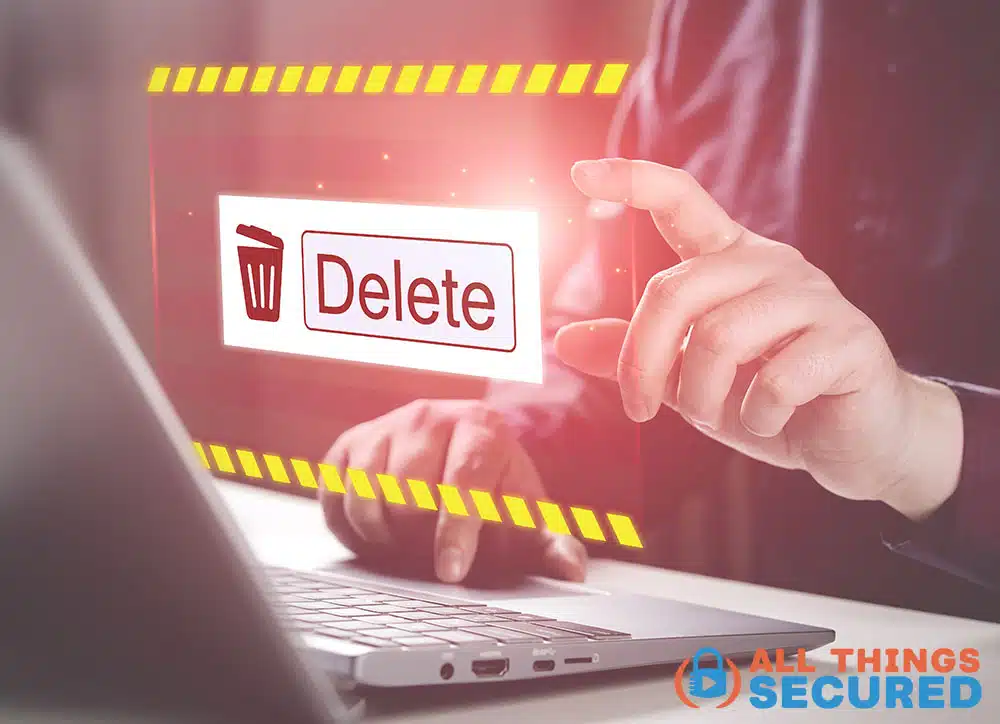
Success Stories: Removing Personal Information
DeleteMe has been in the industry since 2011, longer than Optery, founded in 2020. As a result, DeleteMe has more users claiming the service has helped them save time and inconvenience.
DeleteMe claims to have completed over 100 million successful personal data removals, while Optery states on its site that it has facilitated 10 million removals in comparison.
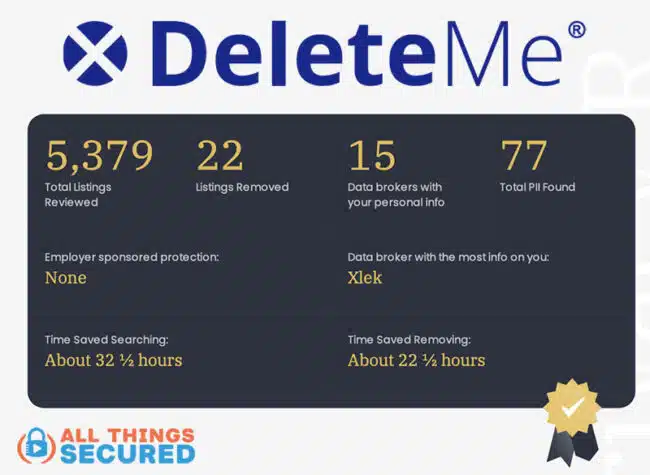
Speed and Accuracy of Removal
Leaving sensitive data live on the internet can lead to increased vulnerability to data breaches, identity theft, fraud, and unwanted solicitation. Both these services prioritize speed and precision to address this concern.
DeleteMe’s average data removal duration varies from 5 to 14 days, depending on the specific data and platforms. Similarly, Optery’s entire process from identifying your data to getting it manually removed from each broker could take several days to weeks to complete. This could take more time depending on the data found, and how bad it is.
Additional Features: Beyond Basic Data Removal
Customers appreciate when a service goes above and beyond its basic offering. Users that are seeking a data removal tool, clearly value privacy. So, how do these compare in terms of extra features beyond data removal?
DeleteMe wins here by offering additional masking features, whereas Optery focuses solely on data removal.
DeleteMe’s Email and Phone Masking
DeleteMe provides users with:
- Email masking: Create email aliases to conceal your actual email when required online.
- Phone masking: Similarly, DeleteMe allows you to create masked phone numbers.
Resources for DIY Data Removal
For those inclined towards DIY solutions, both DeleteMe and Optery offer detailed resources for self-service data removal. However, I recommend this approach only if you have more time than money, as manual opting can be time-consuming.
You can find step-by-step DIY guides on DeleteMe’s and Optery’s websites if an economical data removal solution is what you’re after.
FAQs
Here are answers to some of the most common questions we receive about DeleteMe and Optery.
DeleteMe stands out as a more cost-effective data removal service compared to Optery’s ultimate plan. DeleteMe boasts a larger data broker list and has a longer track record in data removal. Additionally, it offers masking capabilities not available with Opetry.
Yes, based on my own experience and user reviews, Optery is a reputable service that effectively removes your sensitive data from the internet.
Yes, Optery covers a wide range of personal information, including phone numbers, home addresses, email, age, and family members’ details.
Conclusion: Reduce Your Digital Footprint
In summary, while both services prove effective, DeleteMe emerges as the preferable option due is international accessibility, dedicated privacy advisor support, and competitive pricing covering a greater number of data brokers compared to Optery.
However, individuals seeking greater subscription control with monthly plans and a lower entry barrier may find Optery appealing, Ultimately, both services offer valuable solutions to help reduce your digital footprint.
